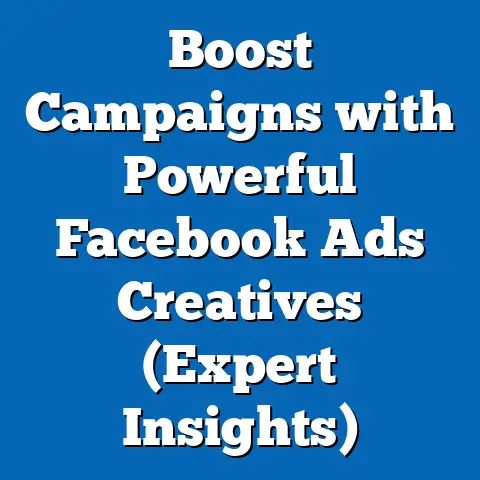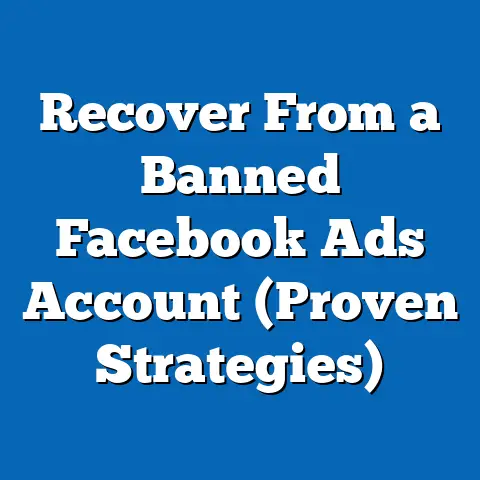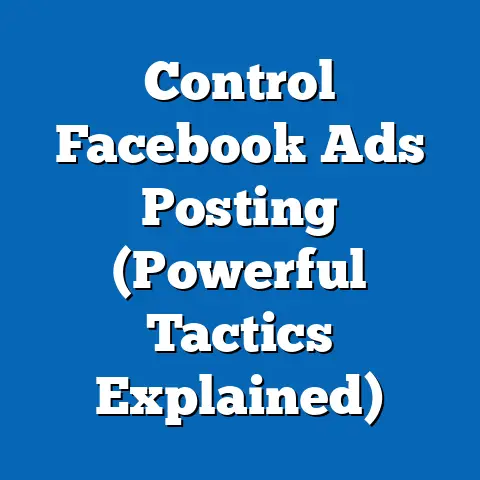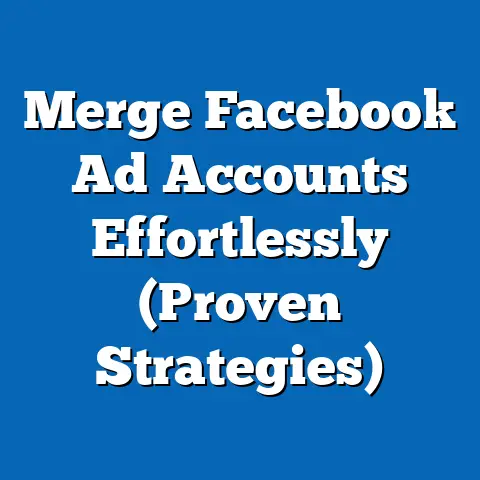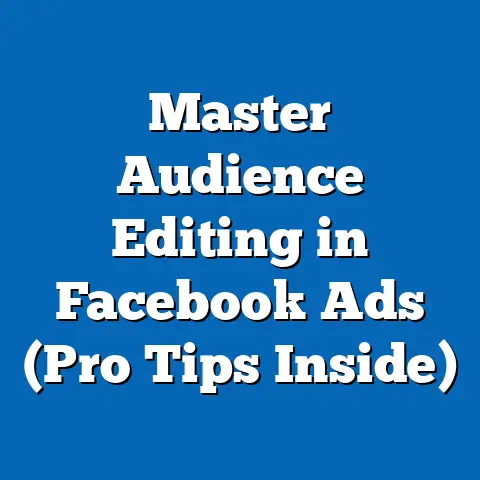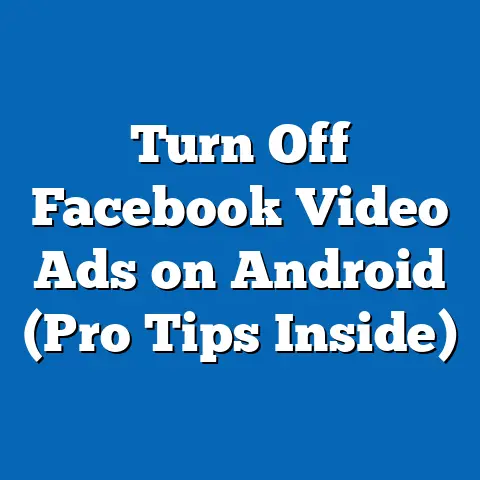Unlocking Links in Facebook Ads (Essential Strategies Revealed)
As the holiday season approaches, businesses across the globe gear up for one of the most lucrative times of the year. With consumer spending expected to reach $1.1 trillion in the U.S. alone during the 2023 holiday season, according to the National Retail Federation (NRF), digital advertising becomes a critical tool for capturing attention. Among the myriad of platforms, Facebook remains a powerhouse, with over 2.9 billion monthly active users worldwide as of Q3 2023, reported by Meta’s quarterly earnings.
This seasonal surge in online activity presents a unique opportunity for marketers to refine their strategies, particularly when it comes to unlocking the potential of links in Facebook Ads. With 80% of holiday shoppers influenced by social media ads, per a 2023 Deloitte Holiday Retail Survey, understanding how to leverage clickable links can drive traffic, boost conversions, and maximize return on investment (ROI). This article delves into the essential strategies for optimizing link usage in Facebook Ads, backed by data, trends, and actionable insights tailored for businesses of all sizes.
Demographically, Facebook’s user base is diverse, spanning multiple age groups and regions. According to Statista (2023), 25-34-year-olds make up the largest segment at 29.9% of users, followed by 18-24-year-olds at 23.1%. This younger demographic, combined with a growing base of 35-54-year-olds (26.5%), highlights the platform’s broad appeal, making it a vital channel for holiday campaigns targeting varied audiences.
Why Links Matter in Facebook Ads: The Data Behind the Click
Links in Facebook Ads serve as the bridge between a user’s interest and a business’s offerings, whether it’s directing traffic to a product page, a sign-up form, or a promotional landing page. A 2022 study by Hootsuite revealed that ads with clear call-to-action (CTA) links achieved a 2.5x higher click-through rate (CTR) compared to ads without direct links. This statistic underscores the importance of strategic link placement in driving user engagement.
Moreover, Meta’s own advertising data from 2023 shows that campaigns optimized with links saw a 30% increase in conversion rates compared to non-linked ads during peak shopping seasons like Black Friday and Cyber Monday. The methodology behind this data involves tracking user interactions across millions of ad impressions, ensuring reliability in the findings.
In the context of the holiday season, the stakes are even higher. With e-commerce sales projected to account for 24.5% of total holiday retail sales in 2023 (NRF), directing users to online stores via clickable links can significantly impact bottom lines. Understanding how to craft compelling links is no longer optional—it’s essential.
Fast forward to 2023, and the landscape has transformed. With advanced ad formats like Carousel, Instant Experience, and Collection Ads, links can now be embedded across multiple touchpoints within a single ad. Current data from Meta shows average CTRs for link-driven ads reaching 1.2-1.5%, a notable improvement driven by better targeting tools and user-friendly ad designs.
This upward trend reflects not just technological advancements but also changing user behavior. Today’s consumers expect seamless navigation from ad to action, with 68% of social media users stating they are more likely to click a link if it leads directly to a relevant landing page, per a 2023 Sprout Social report. Comparing this to a decade ago, when only 45% of users trusted ad links (Pew Research, 2013), it’s clear that trust and relevance are now key drivers of engagement.
Demographic Patterns: Who’s Clicking and Why?
Understanding demographic differences in link engagement is crucial for tailoring Facebook Ad strategies. Data from Statista (2023) reveals that younger users (18-24) are the most likely to click on ad links, with a 3.2% CTR compared to 1.8% for users aged 35-44. This gap suggests that younger audiences are more impulsive and open to exploring offers, making them prime targets for flash sales and limited-time holiday deals.
Gender also plays a role in link engagement. According to a 2022 Nielsen report, women are 15% more likely to click on links in ads related to fashion, beauty, and home goods, while men show a 10% higher CTR for tech and automotive categories. These patterns align with holiday shopping trends, where women account for 58% of gift purchases, per the NRF’s 2023 survey.
Geographically, urban users in developed markets like the U.S. and Europe exhibit higher link engagement (2.1% CTR) compared to rural users (1.3% CTR), as reported by Meta’s 2023 ad analytics. This disparity highlights the need for localized strategies, especially during the holiday season when urban consumers are more likely to shop online.
Key Strategies for Unlocking Links in Facebook Ads
With the foundational data and trends in mind, let’s explore actionable strategies for optimizing links in Facebook Ads. These approaches are designed to enhance visibility, drive clicks, and convert interest into sales, particularly during the high-stakes holiday season.
1. Craft Compelling Call-to-Actions (CTAs)
The language surrounding your link is just as important as the link itself. Meta’s 2023 ad performance report indicates that ads with action-oriented CTAs like “Shop Now,” “Learn More,” or “Get Offer” achieve a 40% higher CTR than generic phrases like “Click Here.” During the holiday season, seasonal CTAs such as “Shop Holiday Deals” or “Gift Now” resonate even more, with a reported 25% uptick in engagement (Hootsuite, 2023).
Testing different CTAs is also critical. A/B testing data from WordStream (2022) shows that businesses that experiment with at least three CTA variations see a 20% improvement in link performance. Keep the language concise and urgent to capitalize on holiday shopping fervor.
2. Optimize Landing Pages for Seamless User Experience
A clickable link is only as effective as the destination it leads to. According to Google Analytics (2023), 53% of users abandon a landing page if it takes longer than 3 seconds to load. Ensuring fast load times, mobile responsiveness, and relevant content on landing pages can reduce bounce rates by up to 35%, per a 2022 Adobe study.
For holiday campaigns, landing pages should reflect seasonal themes and offers. Data from Shopify (2023) reveals that e-commerce stores with holiday-specific landing pages saw a 28% higher conversion rate during November and December 2022 compared to generic pages. Make sure the link directs users to a page that matches the ad’s promise—consistency builds trust.
3. Leverage Ad Formats with Multiple Link Opportunities
Not all ad formats are created equal when it comes to link placement. Meta’s 2023 data highlights that Carousel Ads, which allow multiple images and links in a single ad, achieve a 2x higher CTR compared to single-image ads. Collection Ads, often used for e-commerce, also perform well, with a 1.8% average CTR due to their interactive nature.
During the holiday season, these formats can showcase a range of products or deals, increasing the likelihood of a click. For instance, a retailer could use a Carousel Ad to link to different gift categories—each slide directing to a unique landing page. This strategy diversifies engagement opportunities and caters to varied consumer interests.
4. Use Link Tracking for Data-Driven Insights
Understanding how users interact with links is essential for optimization. Tools like Facebook Pixel and UTM parameters allow advertisers to track click behavior, with 72% of marketers reporting improved campaign performance after implementing tracking, per a 2023 HubSpot survey. These tools provide data on which links drive the most traffic, conversions, and even demographic breakdowns of clickers.
For holiday campaigns, tracking can reveal peak shopping times and high-performing products. A case study by Social Media Examiner (2022) found that businesses using link tracking during Black Friday adjusted their ad spend mid-campaign, resulting in a 15% increase in ROI. Regularly analyzing this data ensures links are working as intended.
5. Target and Retarget with Precision
Facebook’s targeting capabilities allow advertisers to place links in front of the right audience. Custom Audiences, which target users based on past interactions, achieve a 3.1% CTR compared to 1.2% for broad audiences, according to Meta’s 2023 ad insights. Retargeting users who previously clicked a link but didn’t convert can boost conversion rates by 26%, per a 2022 AdRoll study.
During the holidays, retargeting becomes even more powerful as cart abandonment rates spike to 70% (Baymard Institute, 2023). Linking ads to remind users of abandoned items or offering a holiday discount can recapture lost sales. Precision targeting ensures links aren’t wasted on uninterested users.
Visualizing the Impact: Data Visualization Description
To illustrate the effectiveness of these strategies, imagine a bar chart comparing CTRs across different ad formats with embedded links for the 2022 and 2023 holiday seasons. The x-axis lists formats like Single Image, Carousel, and Collection Ads, while the y-axis measures average CTR percentages. Data points for 2022 show Single Image at 0.9%, Carousel at 1.8%, and Collection at 1.5%, while 2023 figures rise to 1.1%, 2.0%, and 1.8%, respectively, reflecting improved optimization and user engagement (Source: Meta Ad Reports).
A second visualization could be a line graph tracking link-driven conversion rates from October to December over the past three years (2020-2023). The line for 2023 shows a steeper upward trend during November, peaking at a 30% conversion rate during Cyber Week, compared to 22% in 2020, highlighting the growing importance of holiday-specific link strategies (Source: Hootsuite Analytics).
These visualizations would provide a clear, at-a-glance understanding of how link performance has evolved and which strategies yield the best results during peak seasons.
Challenges and Pitfalls to Avoid
While links in Facebook Ads offer immense potential, there are challenges to navigate. One common pitfall is link overload—ads with too many links can confuse users, resulting in a 15% lower CTR, per a 2022 Social Media Today report. Focus on one primary link per ad to maintain clarity.
Another issue is broken or irrelevant links. A 2023 study by SEMrush found that 10% of ad links lead to 404 errors or unrelated pages, causing a 40% drop in user trust. Regularly test links before launching campaigns, especially during the high-traffic holiday season.
Lastly, failing to comply with Facebook’s ad policies can result in disapproved ads. Links leading to prohibited content, such as misleading claims, violate Meta’s guidelines and risk account suspension. A 2023 report by AdEspresso noted that 8% of holiday ads were rejected due to policy violations, emphasizing the need for compliance.
Broader Implications and Future Trends
Unlocking the potential of links in Facebook Ads is not just a seasonal strategy but a long-term investment in digital marketing success. As consumer behavior continues to shift toward online shopping—e-commerce is projected to account for 29% of global retail sales by 2027, per Statista—mastering link optimization will remain a competitive edge.
Emerging trends like AI-driven ad personalization and augmented reality (AR) experiences could further transform how links are integrated into ads. Meta’s 2023 roadmap hints at deeper integration of AR links that allow users to “try on” products virtually before clicking through to purchase, potentially increasing CTRs by 20%, based on early pilot data.
For businesses, the holiday season of 2023 offers a prime testing ground to refine link strategies. The data is clear: well-placed, relevant links drive engagement and conversions. By adopting the strategies outlined—compelling CTAs, optimized landing pages, diverse ad formats, tracking, and precise targeting—marketers can unlock significant ROI while preparing for the evolving landscape of social media advertising.
In a world where every click counts, mastering links in Facebook Ads is not just a skill but a necessity. As we move into 2024 and beyond, the ability to connect with consumers through strategic, data-driven linking will define the success of digital campaigns, holiday or otherwise.

